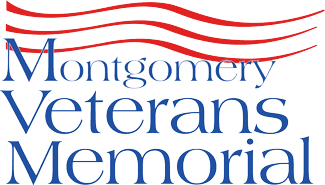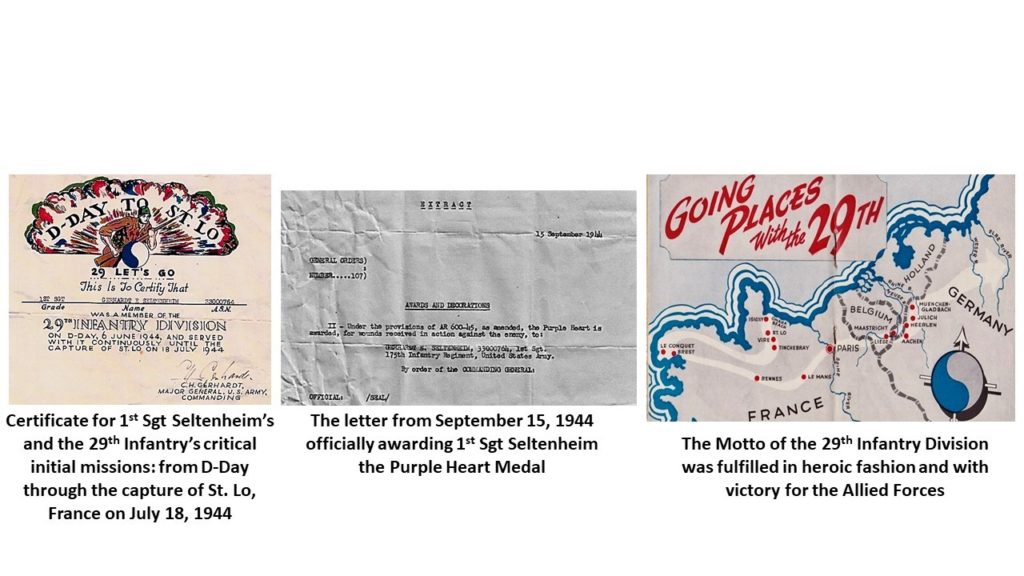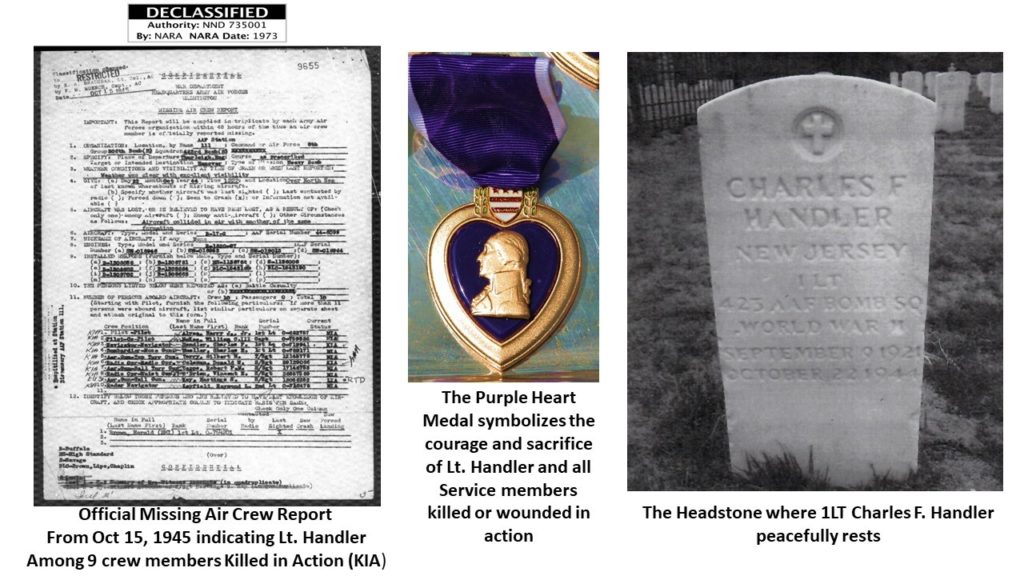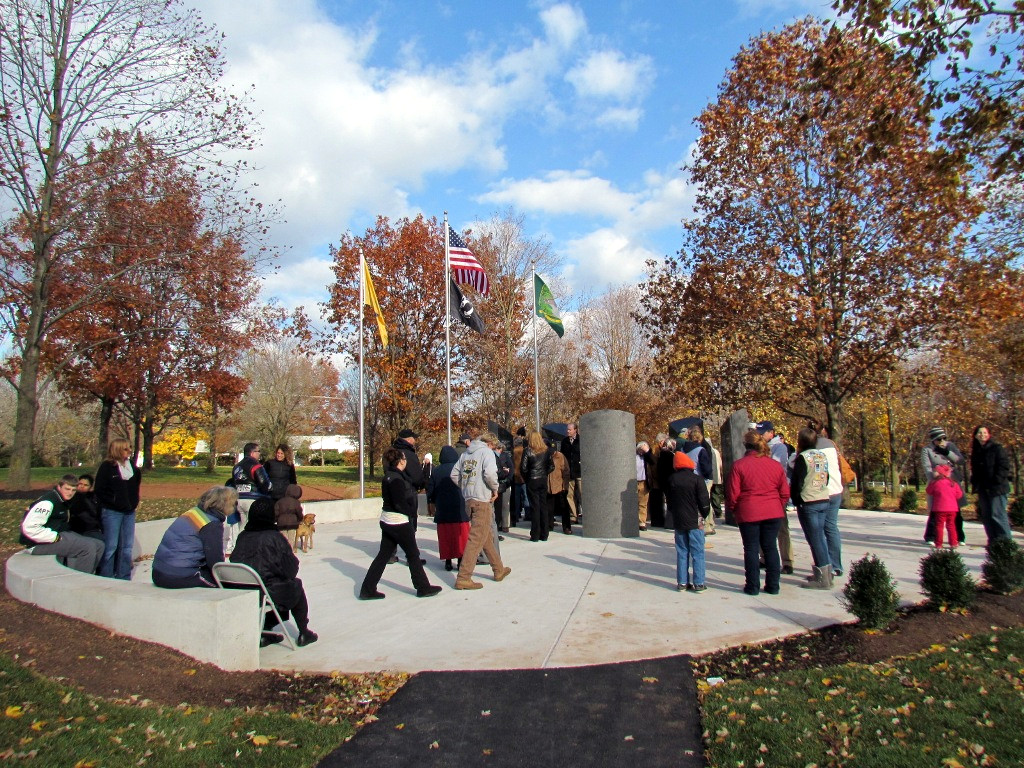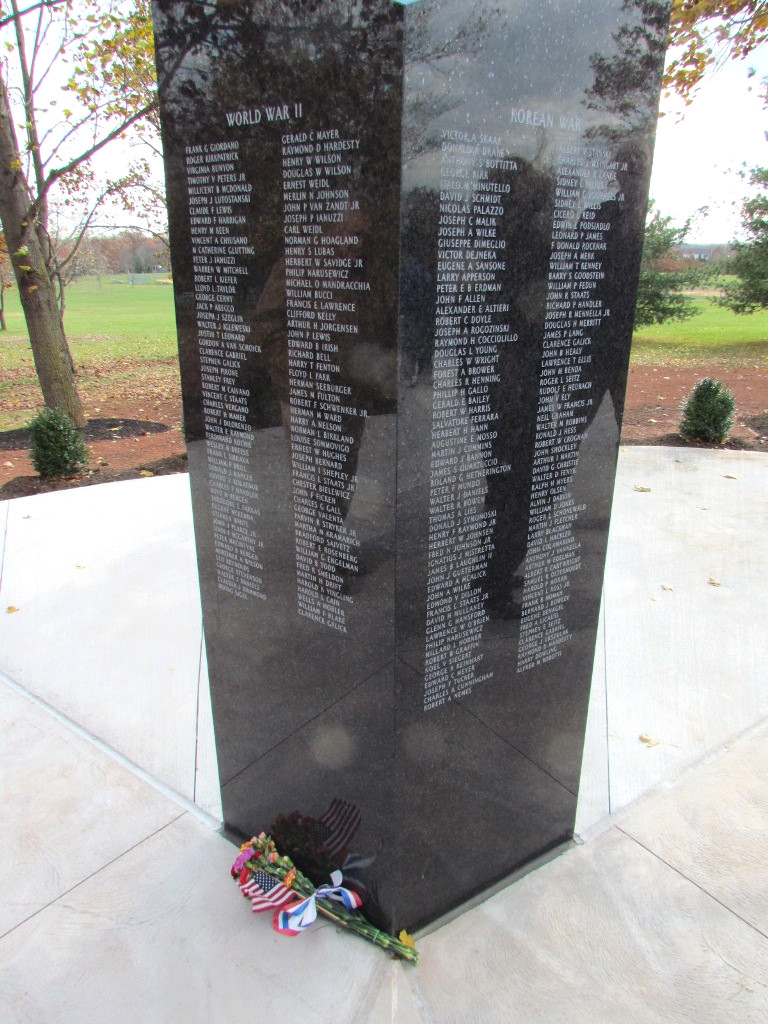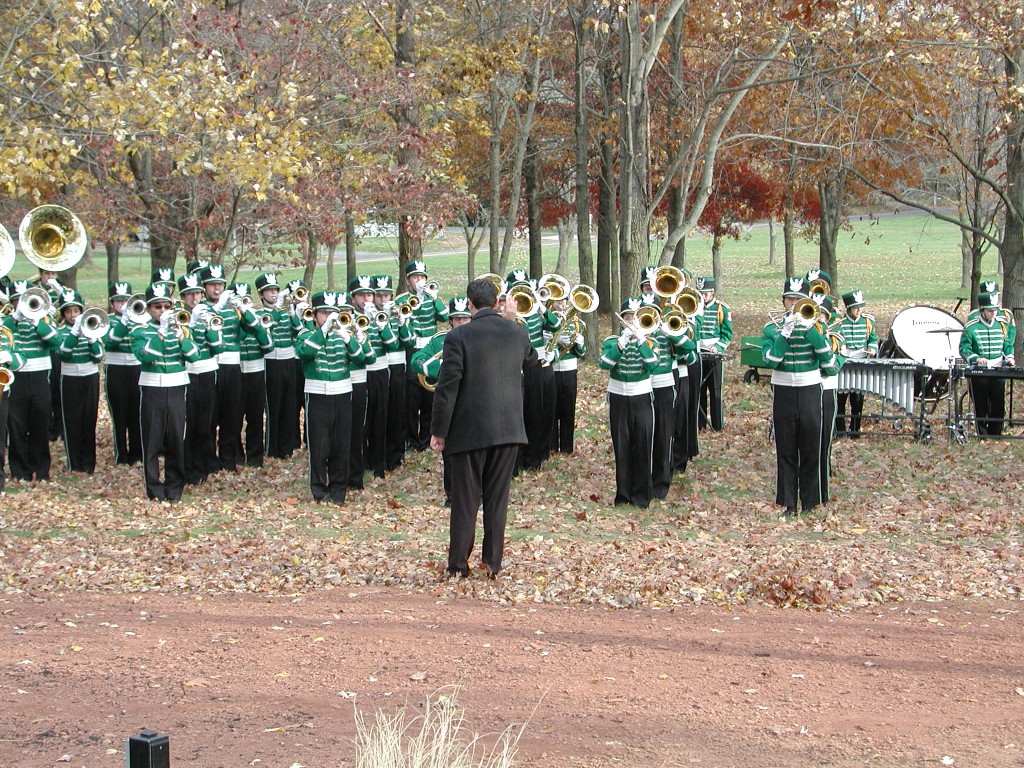Montgomery Township has the honorable distinction of being designated a Purple Heart Community. As part of the privilege of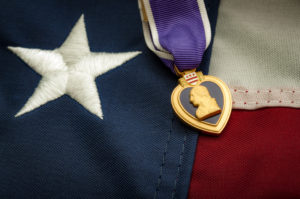 remembering and acknowledging the sacrifices of those who gave so much for the freedom and opportunities we have today, the Montgomery Veterans Memorial Committee (MVMC) will be continuing to collect and add to the stories of “Purple Heart in Our Community” for any Purple Heart recipients currently residing in Montgomery Township as well as current Township residents that are immediate family members of a Purple Heart recipient (including parents /grandparents). If this distinction includes you or someone in your family and you have not yet spoken with the MVMC, please call Township Clerk Lisa Fania at (908) 359-8211 Ext. 2240.
remembering and acknowledging the sacrifices of those who gave so much for the freedom and opportunities we have today, the Montgomery Veterans Memorial Committee (MVMC) will be continuing to collect and add to the stories of “Purple Heart in Our Community” for any Purple Heart recipients currently residing in Montgomery Township as well as current Township residents that are immediate family members of a Purple Heart recipient (including parents /grandparents). If this distinction includes you or someone in your family and you have not yet spoken with the MVMC, please call Township Clerk Lisa Fania at (908) 359-8211 Ext. 2240.
The MVMC and Township plans to again recognize all our Purple Heart residents on August 7, 2023 (National Purple Heart Day) and maintain a permanent record of the stories of honor and remembrance on this website. The following Purple Heart recipients have been identified thus far; may their narratives and pictures bring to life the spirit, bravery, and sacrifices they made for us all.
2022 Honoree Additions
John Bruno – U.S. Army
Township resident Chris Bruno’s father, John J. Bruno, proudly served his country in the U.S. Army during World War II. PFC Bruno was a Rifleman with the 28th Cavalry Reconnaissance Squadron (Mechanized) Troop B, functioning as part of both intelligence gathering and combat in General Patton’s Third Army throughout campaigns in Normandy, Northern France, the Ardennes, Rhineland, and Central Europe. During the Battle of the Bulge, the 28th Cavalry helped secure the western flank from German positions around Bastogne, enabling Allied advancement and liberation of the 101st Airborne trapped by the German siege in December 1944. PFC Bruno and his unit continued to support critical operations in the Bastogne region in often brutal winter conditions, helping finish off remaining German resistance south and east in the town of Harlange from January 3rd – 15th and then moving to secure the town of Wiltz, Luxembourg from January 19th – February 19th. These operations opened up the path for Allied advancement to the Rhine River and into Germany from the Western Front; PFC Bruno was wounded with shrapnel during combat on January 20, 1945 and awarded the Purple Heart in helping achieve this critical mission. (click below images to enlarge.)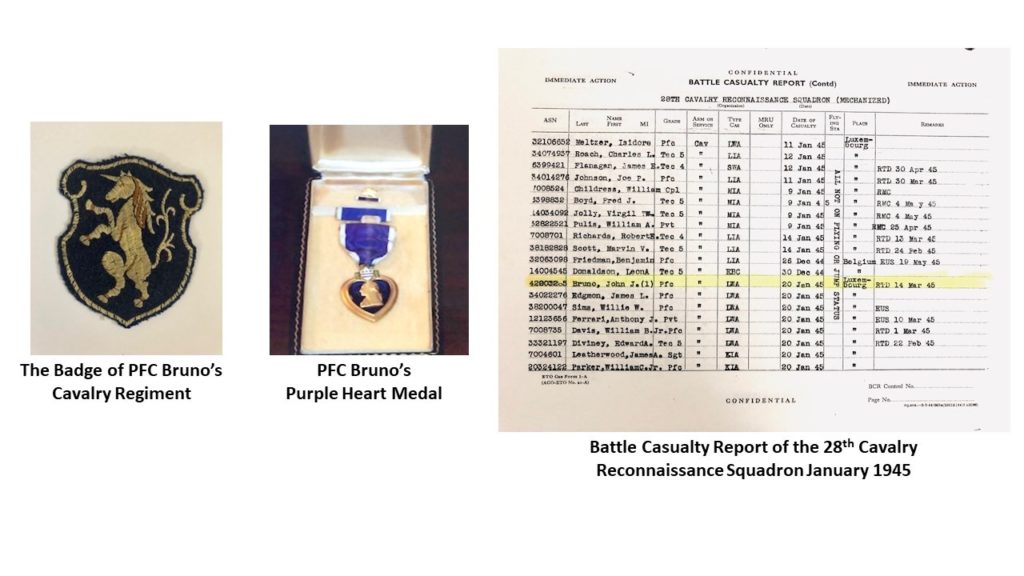
Gerhardt E. Seltenheim – U.S. Army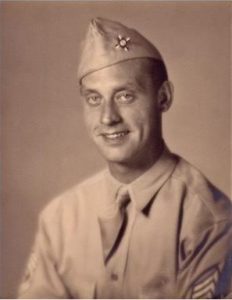
Township resident Willett Seltenheim’s father, 1st Sergeant Gerhardt E. Seltenheim, earned a Purple Heart and Bronze Star Medal while serving with the 29th Infantry Division during World War II. 1SG Seltenheim arrived in England in October 1942 to train for two years before the Allied invasion at Normandy. His M Company, of the 175th Infantry Regiment, was offshore in the English Channel on D-Day and witnessed the actual assault as their landing craft waited to discharge his Company. He landed at Omaha Beach on June 7, 1944 (D-Day+1). Two days later, his company was fighting the Germans for control of Isigny. He participated in major battles against the German army and the two-week siege and capture of St. Lo.
1SG Seltenheim was wounded on August 19, 1944 in Le Fresne Paret during the Allied offensive to take Brest, a critical port city along the French coast heavily fortified with German army resistance. After a brief recovery period, 1SG Seltenheim returned to answer the call of duty with his fellow soldiers in the 29th Infantry battling the German army through France and overcoming brutal resistance in small German towns before taking Aachen and Munchen-Gladbach in 1945. (click below images to enlarge.)
Charles F. Handler – U.S. Army Air Forces
Born in Belle Mead in 1921, 1st Lieutenant Handler served with the 306th Bomb Group, The Reich Wreckers. Trained for combat with the B-17 “Flying Fortresses”, he moved to England in August 1942 and flew combat missions with the 423rd Army Air Force Bomb Squadron.
On October 22, 1944, he was on the crew of the B-17G #44-8099 when they departed from their base in England during a mission to Hannover in Germany. Their bomber crashed into the North Sea with Lt. Handler among 9 crew members killed-in-action. Charles is memorialized at Beverly National Cemetery in Burlington County; his name and that of his three brothers are forever interred with honor on the Montgomery Veterans Memorial. (click below images to enlarge.)
Iraq, Afghanistan, Vietnam Era, Korean War
Ashley Henderson-Huff – U.S. Army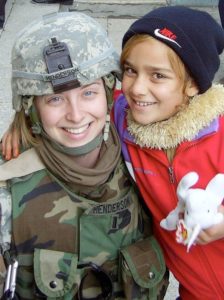
Montgomery High School graduate Class of 2000, Lieutenant Ashley Henderson Huff was commissioned at the University of Georgia through the Army Reserve Officer Training Corps. She joined the U.S. Army in May 2004, and was deployed to Iraq in December 2005 in support of Operation Iraqi Freedom. She performed the duties of a platoon leader with the 549th Military Police Company, 385th Military Police Battalion. Lt. Huff was killed when a roadside side bomb detonated while she was on patrol on September 19, 2006. She was the first New Jersey woman to be killed in the war and the only Montgomery High School graduate to have been killed in action while serving in the military. The United States military awarded First Lieutenant Huff the National Defense Service Medal, the Global War on Terrorism Expeditionary Medal, the Global War on Terrorism Service Medal and the Army Service Ribbon. She was posthumously awarded the Bronze Star, Purple Heart and the Combat Action Badge. The entrance road to Montgomery High School was re-named Lieutenant Ashley Henderson Huff Memorial Drive, in honor of Ashley’s service to her country.
Michael M. McGreevy, Jr. – U.S. Navy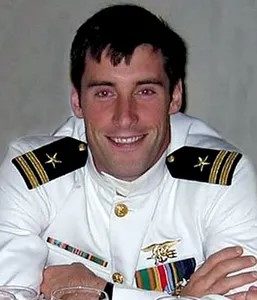
Navy Lieutenant Michael McGreevy was part of a dedicated Naval Special Warfare team, Seal Team Ten, fighting the Taliban in Operation Enduring Freedom. Lieutenant McGreevy worked to help ensure al Qaeda terrorists could not train in, nor launch strikes from Afghanistan since their attack on the World Trade Center in New York on September 11, 2001. He was one of 16 troops killed when a MH- 47 Chinook helicopter was shot down in Afghanistan on a night mission on June 28, 2005. McGreevy, seven other SEALs. and eight Army Nightstalker” commandos, died in a heroic attempt to rescue their fellow SEALs. It was the biggest single loss of life for Naval Special Warfare forces since World War II. Lieutenant McGreevey was awarded the Bronze Star with Combat “V” for Valor, Purple Heart, Combat Action Ribbon, and Afghanistan Campaign Medal, posthumously. Lt. McGreevy’s daughter, Molly was 15 months old at the time of his death; she is a student at MHS at the time of this writing (September 2021).
Kevin J. Klink, U.S. Marine Corps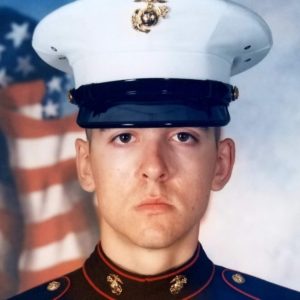
Kevin joined the Marine Corps at age 17, following in the footsteps of his father who served in Vietnam. As an 0311 Infantryman, Kevin completed two tours in Iraq. Kevin was serving in the “Triangle of Death” region south of Baghdad, guarding the critical main supply route of military supply convoys from Kuwait into locations in Iraq. On September 7, 2004 his Humvee hit an IED (improvised explosive device), throwing him 15 feet into the air and leaving him unconscious with shrapnel and force-trauma wounds. He proudly displays the Purple Heart he was awarded in his home, and honors the freedom for which he and all United States Service members fought for by rescuing and caring for animals on his “Live Free Farm” in Skillman. Kevin’s farm also facilitates programs for U.S. military veterans, especially those who suffered PTSD, and can be contacted via email at livefreefarm@yahoo.com
Stephen H Warner – U.S. Army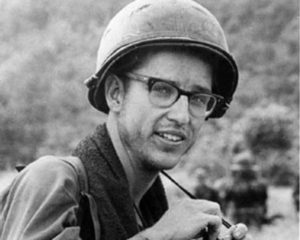
Specialist Rank 4 Stephen H. Warner was an anti-war activist who was drafted in 1969 after finishing his first year at Yale Law School. After induction into the Army, Stephen Warner remained bitterly opposed to the Vietnam War. However, when sent to Vietnam as a public information specialist, he repeatedly volunteered to go out into the field to write human interest stories about the combat soldiers. In February 1971 the vehicle on which Specialist Warner was riding in Quang Tri Province was hit by a rocket-propelled grenade, killing Steven and three other American soldiers. The book, Killed In Action, contains 22 photographs taken by Steven Warner during his travels around Vietnam, as well as a selection of his human interest articles.
Robert Gesregan, U.S. Army
Robert was wounded in action while serving with the US Army in Vietnam. He was identified as a Montgomery Township (Skillman) resident who earned the Purple Heart via a search in the National Purple Heart Hall of Honor records. There is no additional information available in these records; if anyone has such information, please let us know at the email or phone number indicated at the beginning of this post.
World War II
Newton Wesley Jones – U.S. Army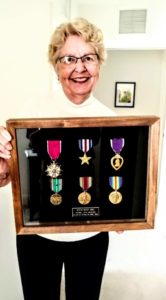
Nancy Dawn Jones is a military widow living at Stonebridge; her husband’s father (Colonel Newton Wesley Jones) earned the Purple Heart serving in World War II. Colonel Jones was leading from the front, to free a concentration camp in Germany, when they entered a German town under white-flag truce. Tragically, it was an ambush and Colonel Jones and his jeep driver were killed. He is buried in the American Military cemetery in Saint Avold, France. Nancy’s husband, William Dudley Jones, was only 12 when he lost his Dad on April 29, 1945. He was proud to follow in his father’s footsteps and serve our Country in the United States Army, achieving the rank of Lieutenant Colonel before his retirement from military service in 1973.
Mario Arthur Comizzoli – U.S. Merchant Marine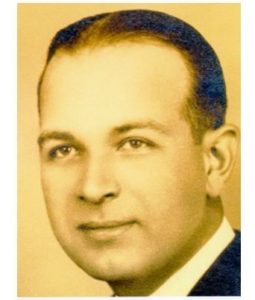
Township resident Robert Comizzoli’s father Mario Comizzoli received the Mariners’ Medal (the equivalent of the Purple Heart for those killed or wounded in the Merchant Marine Service) when he gave the ultimate sacrifice for his country in World War II. All 92 crew members aboard the munitions vessel SS Louise Lykes, including O.S. Comizzoli, lost their lives when their ship was torpedoed by a German submarine in January 1943. Robert was only 2 years old when he lost his father and has no memory of him. His father’s cousin told him a story that speaks volumes of O.S. Comizzoli’s character: “Your father and I went to see the SS Louise Lykes in Newark (NJ) while it was being loaded. The cargo consisted of huge aerial bombs, and I tried to dissuade him from making the trip across the dangerous North Atlantic- made especially so as there was no escort or convoy available at the time.” Some years after the war, Veteran status in the US Coast Guard was extended to those who served in the Merchant Marine, and Robert obtained this status for his father.
Edward Binkowski, Sr. – U.S. Army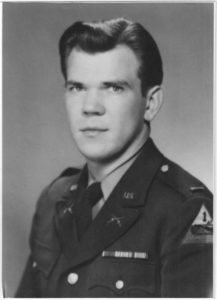
Township resident Chris Andrews’ father, Lieutenant Edward Binkowski, earned the Purple Heart while serving in the Army during World War II. Lt. Binkowski was serving in the North African front when he came under heavy fire while leading his platoon. He was hit with two bullets in the arm, and multiple close calls. He was heroically carried back to barracks for surgery by one of his platoon sergeants who disobeyed orders and put himself in great danger of the enemy’s fire to do so. Twelve additional bullet holes were identified in the side of his field jacket- one of which was just two inches away from the grenades he was carrying. Two inches were the difference between remaining forever on the battlefield and making it back home.
To shed light on the bravery and selfless service of the US Army nurses, Lieutenant Binkowski made this request to a newspaper interviewer while he was in rehabilitation at Halloran General Hospital: “Give the Army nurses a plug. They’re the closest to the front of any nurses. They give up their beds (for the wounded soldiers) and sleep on the ground.”
Thomas E. Hobby , U.S. Army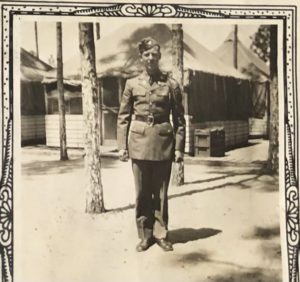
Township resident Mary Kay Smith’s family relative Private Thomas Hobby earned both a Purple Heart and Silver Star serving in the 1st Infantry Division of World War II. The Division entered combat in World War II as part of “Operation Torch”, the invasion of North Africa and the first American campaign against the Axis powers. The initial lessons of combat were harsh, and many men were casualties in the campaigns stretching from Algiers to Tunisia that followed. Private Hobby gave the ultimate sacrifice in these early campaigns and died from a grenade on April 23, 1943; his courage for his country and gallantry for his fellow soldiers are ingrained in the Purple Heart and Silver Star medals he received posthumously, and permanently interred in a US Military cemetery in Tunisia.
John Bruno – U.S. Army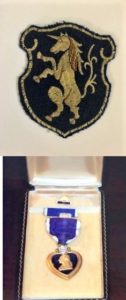
Township resident Chris Bruno’s father, John J. Bruno, proudly served his country in the U.S. Army during World War II. PFC Bruno was a Rifleman with the 28th Cavalry Reconnaissance Squadron (Mechanized) Troop B, functioning as part of both intelligence gathering and combat in General Patton’s Third Army throughout campaigns in Normandy, Northern France, the Ardennes, Rhineland, and Central Europe. During the Battle of the Bulge, the 28th Cavalry helped secure the western flank from German positions around Bastogne, enabling Allied advancement and liberation of the 101st Airborne trapped by the German siege in December 1944. PFC Bruno and his unit continued to support critical operations in the Bastogne region in often brutal winter conditions, helping finish off remaining German resistance south and east in the town of Harlange from January 3rd – 15th and then moving to secure the town of Wiltz, Luxembourg from January 19th – February 19th. These operations opened up the path for Allied advancement to the Rhine River and into Germany from the Western Front; PFC Bruno was wounded with shrapnel during combat on January 20, 1945 and awarded the Purple Heart in helping achieve this critical mission
Gerhardt E. Seltenheim – U.S. Army
Township resident Willett Seltenheim’s father, 1st Sergeant Gerhardt E. Seltenheim, earned a Purple Heart and Bronze Star Medal while serving with the 29th Infantry Division during World War II. 1SG Seltenheim arrived in England in October 1942 to train for two years before the Allied invasion at Normandy. His M Company, of the 175th Infantry Regiment, was offshore in the English Channel on D-Day and witnessed the actual assault as their landing craft waited to discharge his Company. He landed at Omaha Beach on June 7, 1944 (D-Day+1). Two days later, his company was fighting the Germans for control of Isigny. He participated in major battles against the German army and the two-week siege and capture of St. Lo.
1SG Seltenheim was wounded on August 19, 1944 in Le Fresne Paret during the Allied offensive to take Brest, a critical port city along the French coast heavily fortified with German army resistance. After a brief recovery period, 1SG Seltenheim returned to answer the call of duty with his fellow soldiers in the 29th Infantry battling the German army through France and overcoming brutal resistance in small German towns before taking Aachen and Munchen-Gladbach in 1945.
Charles F. Handler – U.S. Army Air Forces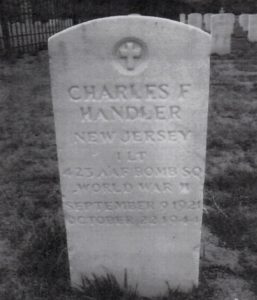
Born in Belle Mead in 1921, 1st Lieutenant Handler served with the 306th Bomb Group, The Reich Wreckers. Trained for combat with the B-17 “Flying Fortresses”, he moved to England in August 1942 and flew combat missions with the 423rd Army Air Force Bomb Squadron.
On October 22, 1944, he was on the crew of the B-17G #44-8099 when they departed from their base in England during a mission to Hannover in Germany. Their bomber crashed into the North Sea with Lt. Handler among 9 crew members killed-in-action. Charles is memorialized at Beverly National Cemetery in Burlington County; his name and that of his three brothers are forever interred with honor on the Montgomery Veterans Memorial.
Michael Malko – U.S. Army
Private First Class Michael Malko served with US Army 27th Infantry Division 165th Infantry Regiment. On June 15, 1944, Private First Class Malko’s regiment and 8,000 U.S. Marines stormed the beaches of the island of Saipan, with a goal of gaining control of a crucial air base. Facing fierce enemy resistance, Americans poured from their landing crafts to establish a beachhead, battle Japanese soldiers inland and force the Japanese army to retreat north. With the U.S. victory apparent, Japanese soldiers launched a massive but futile banzai charge. Pfc. Malko was killed in action on July 1, 1944. On July 9, the U.S. flag was raised in victory over Saipan. Michael Malko was one of six brothers who all served in World War II.
Charles Rospop – U.S. Marine Corps
Marine Private First Class Charles Rospop enlisted and served with the First Battalion, 24th Marines from 1942 until his death. The 24th Marines embarked for Iwo Jima in late January 1945 with other 4th Marine Division units. From the very beginning of the operation the 24th Marines remained locked in battle in one of the most infamously brutal battles of World War II. Pfc Rospop succumbed to wounds on March 5, 1945 before the last enemy pocket of resistance was finally crushed on March 16th. The regiment was relieved two days later and immediately boarded naval vessels and returned to Hawaii. The regiment suffered 652 killed and 1053 wounded. Private Rospop’s headstone lies at the National Cemetery of the Pacific in Honolulu, Hawaii.
George L. Brown – U.S. Army
Tech Corporal George L. Brown served with the 271st Engineer Combat Battalion 71st Infantry Division in the US Army. The 71st Infantry Division arrived at Le Havre, France in February 1945, several months after the D-Day invasion. The division moved east and saw its first action on March 11th. The ousting of the Germans from France began a few days later. The division would go on to advance through Germany as the Axis Power began to crumble, liberating Gunskirchen Lager, a subcamp of Mathausen Concentration Camp. Tech Corporal Brown died from non-battle wounds on March 26, 1945. He is buried in Lorraine Cemetery in St. Avold, France.
World War I
Joseph Belmont, U.S. Army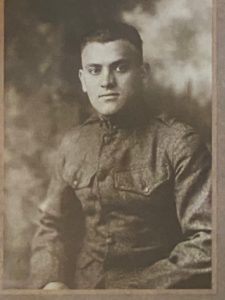
Township resident Nancy Gallagher’s grandfather, Joseph Belmont, earned the Purple Heart from wounds suffered during combat of World War I. Private Belmont was an ambulance driver in the US Army’s Rainbow Division serving the front lines of trench warfare. He spent 6 weeks in a hospital as a result of injuries from mustard gas as he served to help our soldiers wounded in the field. Private Belmont was one of the earliest Service members to receive the official Purple Heart award in a ceremony in 1934, though the spirit of the Purple Heart award dates back to General George Washington and the Continental Army (see History at the end of this article). Nancy proudly displays her grandfather’s medal in her family room along with amazingly well-preserved memorabilia from his Service.
Nancy reflected on her grandfather’s service and sacrifices with these thoughts: “As an ambulance driver he must have witnessed horrific wounds and suffering of his comrades. In many ways, transporting the dying would have been worse than transporting the dead. I can’t even begin to comprehend it. The items I have from him help me understand what he and so many others endured for the sake of our nation.”
Samuel Duffield, U.S. Marine Corps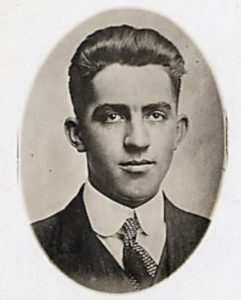
Corporal Duffield from Skillman was the first person in his community to answer the call of duty after the U.S. entered World War I, enlisting at age 19 in April 1917. As a member of the Second Division, he was thrown into the terrible fighting at Chateau-Thierry on May 31st, 1918. Fighting alongside the 5th and 6th Marines, the units stopped the German rush on Paris. Combat continued day and night through July 9, with Corporal Duffield’s infantry division immortalizing itself by capturing and holding Vaux against all counter attacks. After recovering from a mustard gas attack on July 4, Sam went right back into battle on September 30 in the Blanc Mont region. He gave the ultimate sacrifice for his country in the storming of Blanc Mont Ridge on October 3, 1918; Corporal Duffield and his fellow Marines heroic efforts led to victory by October 9th, forcing the German forces out of the Champagne region for good. (from the New Jersey State Archives)
Richard James Harkness, U.S. Army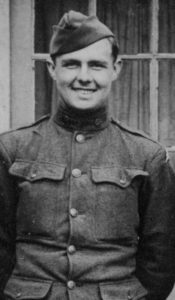
Township resident Bonnie Likely’s grandfather Private Richard Harkness received the Purple Heart while serving in the combat of World War I. Private Harkness was stationed in France when he was wounded while running a message from his unit to another allied army unit. “Runners” had one of the most dangerous and important tasks of the war- to deliver critical information between units while running through open fields under constant artillery bombardment and snipers looking to shoot anything moving outside the trenches. Bonnie’s mother made a shadow box display of her grandfather’s medals and passed down a precious hand-written letter and other priceless war memorabilia to keep alive his spirit and bravery from which he earned the Purple Heart.
Arthur S. Dixon – U.S. Army
Arthur S. Dixon enlisted in the US Army in 1917 to fight in the Great War. Dixon’s regiment was one of the first waves of US troops to leave for Europe to fight “Over There.” The first US infantry troops landed in France on June 26, 1917 to begin training for combat. Dixon was killed in action soon after enlisting, making him one of over 100,000 American service people to die in the First World War.
Civil War
John A. Cray – KIA Civil War
Private John A. Cray served in the 4th New Jersey Volunteer Infantry Regiment for the Union Army during the American Civil War. The regiment organized at Camp Olden in Trenton in the summer of 1861 under General Butler who attached to Runyon’s New Jersey Brigade in defense of Washington, DC. The regiment moved south to control the occupation of Arlington Heights, construct Fort Runyon, and fought at the first Battle of Bull Run
James Cray – KIA Civil War
Private James Cray also served in the 4th New Jersey Volunteer Infantry Regiment, which organized at Camp Olden in Trenton in the summer of 1861. Private Cray enlisted in September 1861 and left New Jersey for Maryland with his regiment. The regiment advanced South throughout the duration of the war, fighting in battles including Bull Run, Chancellorsville, Wilderness, Spotsylvania Court House , Cold Harbor, and finally Appomattox Court House
Revolutionary War
General Richard Montgomery – KIA Revolutionary War
General Richard Montgomery, Montgomery Township’s namesake, rose through the ranks of the British Army, but took up the Patriot cause when the American Revolutionary War began in 1775. He became a Major General in the Continental Army and is largely known as America’s First National Hero after falling in the Battle of Quebec on New Year’s Eve 1775. He is America’s First General Officer to be killed in battle and America’s First General Officer to be killed on foreign soil.
History of the Purple Heart Award (from the National Purple Heart Hall of Honor in NY)
The award known as the Purple Heart has a history that reaches back to the waning days of the American Revolution. The Continental Congress had forbidden General George Washington from granting commissions and promotions in rank to recognize merit. Yet Washington wanted to honor merit, particularly among the enlisted soldiers. On August 7, 1782, his general orders established the Badge of Military Merit:
“… The General ever desirous to cherish virtuous ambition in his soldiers, as well as to foster and encourage every species of Military merit directs whenever any singularly meritorious action is performed, the author of it shall be permitted to wear on his facings, over his left breast, the figure of a heart in purple cloth or silk edged with narrow lace or binding.”
This award was open only to enlisted men (Privates, Corporals and Sergeants) and granted them the distinction of being permitted to pass all guards and sentinels as could commissioned-officers. The names of the recipients were to have been kept in a “Book of Merit” (which has never been recovered).
At the present time there are three verified recipients of the Badge of Military Merit: Sergeant Elijah Churchill, 2nd Continental Dragoons; Sergeant William Brown, 5th Connecticut Continental Line Infantry and Sergeant Daniel Bissel, 2nd Connecticut Continental Line Infantry. Washington stated that the award was to be a permanent one, but once the Revolution ended, the Badge of Military Merit was all but forgotten until the 20th century.
General John J.“Blackjack” Pershing suggested a need for an award for merit in 1918, but it was not until 1932 that the modern Purple Heart was created in recognition of Washington’s ideals and for the bicentennial of his birth. General Order #3 announced the establishment of the award:
“… By order of the President of the United States, the Purple Heart, established by General George Washington at Newburgh, August 7, 1782, during the War of the Revolution is hereby revived out of respect to his memory and military achievements.
By order of the Secretary of War:
Douglas MacArthur
General, Chief of Staff
On May 28, 1932, 136 World War I veterans were conferred their Purple Hearts at Temple Hill, in New Windsor, NY. Temple Hill was the site of the New Windsor Cantonment, which was the final encampment of the Continental Army in the winter of 1782-1783. Today, the National Purple Heart continues the tradition begun on these grounds in 1932, of honoring those who have been awarded the Purple Heart.
Concluding Notes:
Because all US Service members who are killed in action (KIA) are awarded the Purple Heart award, this report includes all soldiers from Montgomery Township who gave the ultimate sacrifice for our Nation from the Revolutionary War onward. National Purple Heart Day (August 7th) corresponds to the date on which General George Washington gave the order to establish the Badge of Military Merit in 1782; the predecessor to what became known as the Purple Heart award in 1932.
In doing the research and speaking with the families who responded to the Purple Heart in Our Community outreach, it was clear they are all grateful for the opportunity to tell and share these stories. There is a powerful sense that they are as proud of their ancestor’s Purple Heart awards as the soldiers themselves surely were, and this article would not have been possible without each family’s diligence in preserving their memories. It was a great honor to learn about these brave soldiers and deeply humbling to help bring their spirits back to life so that their service and sacrifices shall not forgotten. It is eternally vital to help remind people of how perspectives on the past help shape their present; including opportunities they enjoy thanks to the sacrifices of others who came before them.
The spirit of this article is dedicated to the courage and selfless service of our Purple Heart recipients, and to all our Armed Service members (past and present), our police, firefighters, and EMS that exemplify these qualities in service to their communities and nation. It is worthy of pondering how to create the best present and future society, and the human qualities necessary to do so; anyone willing to put their own lives on the line for the safety and freedom of others is high on that list. Montgomery Township is a wonderful place to live in large part due to the dedication and selflessness of our Service members and our 1st Responders.
Contributing Authors:
Michael Maloney (U.S. Marine Corps, Retired and Member of the Montgomery Township Veterans Committee)
James Bushong (Member of the Montgomery Township Veterans Committee)
Barbara Preston (Editor-in-Chief, The Montgomery News)
The Service Members and their families that keep these memories alive and graciously shared them with the authors and our community
